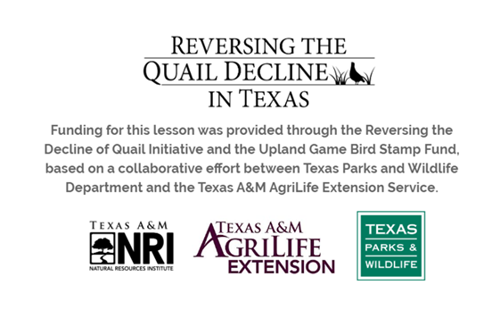What Do Quail Eat?
Page 1: A View of a Quail Silhouette and Items that Make Up a Quail’s Diet
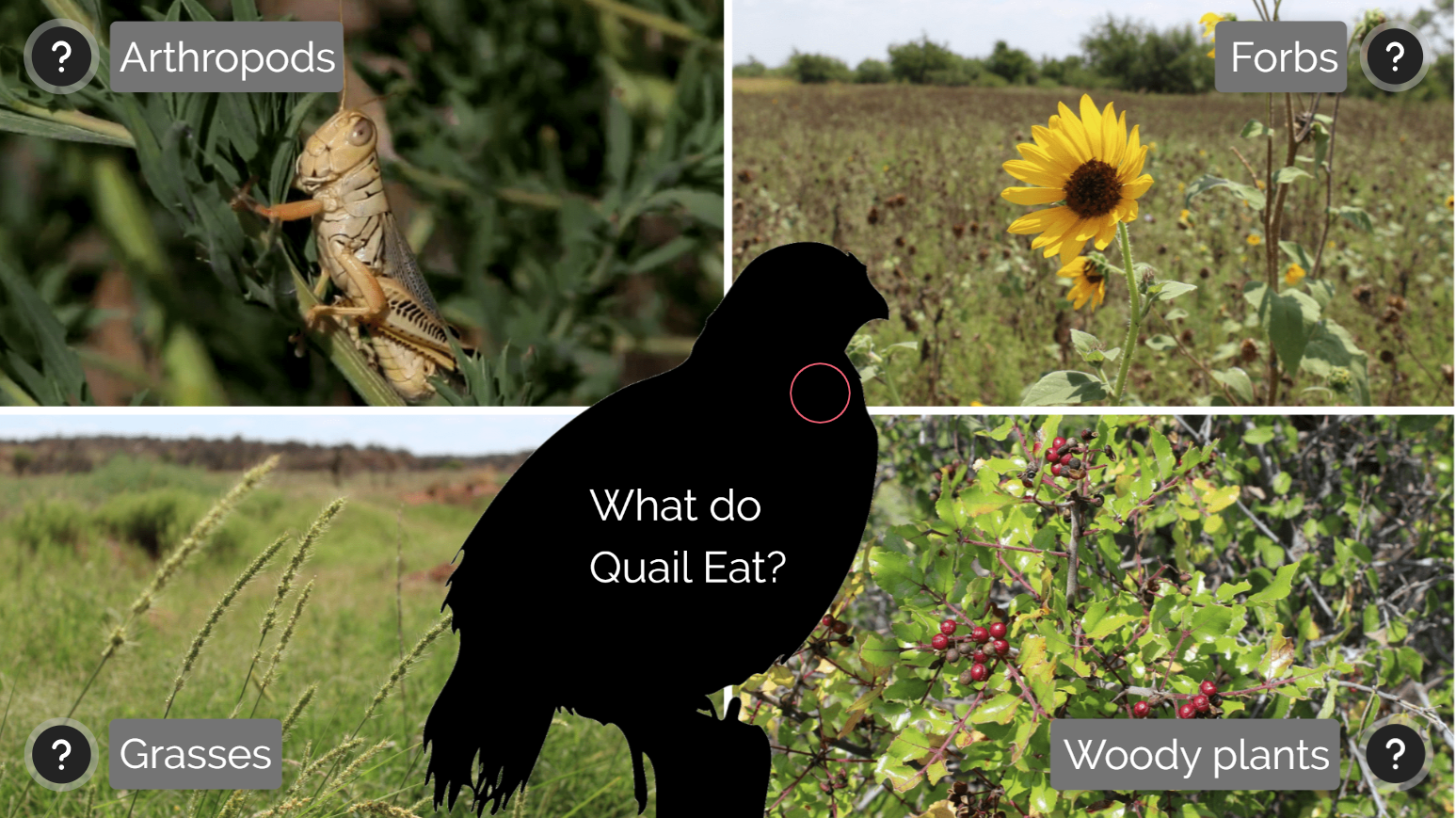

Above: A screenshot of the main page from the What do Quail Eat? Lesson, which highlights some of the important food sources for quail with images of each (arthropods, forbs, grasses and woody plants) and with a silhouette of a quail with the question – “What do Quail Eat?”. Interactive elements are labeled, and the content from each element is included below.
ITEMS ON THIS PAGE:
What do Quail Eat?
Quail are considered omnivores – this means they will eat plant-based food, such as seeds and leafy, green vegetation, as well as animal-based food, such as insects.
Seeds are a major part of a quail's diet, but not all seeds are equal in a quail's eyes. Imagine you have to feed yourself without using your hands or teeth--would you rather eat foods that are fluffy like a cotton ball or smooth like a corn kernel? For the same reasons, quail prefer hard, slick seeds (like the ragweed seeds in the left picture) over fuzzy ones (like the little bluestem in the right picture).
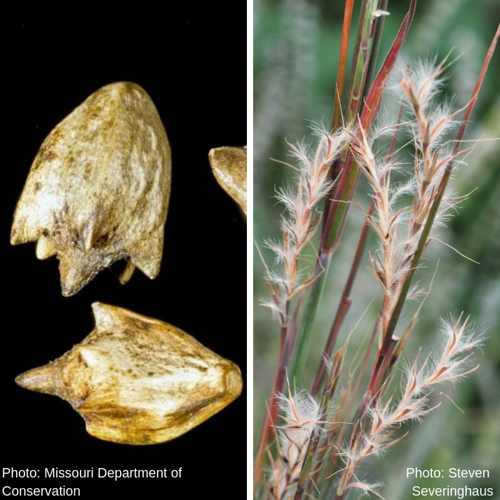
Above: The image shows a picture of ragweed seeds on the left and little bluestem stems and seeds on the right.
A quail’s diet varies across the year as different food sources increase or decrease in availability. For example, quail will eat lots of insects and seeds in the spring and early summer since they are very plentiful, but they will switch and eat more green vegetation in the late summer, fall and winter as seeds and insects become more scarce.
Some cultivated crops are good sources of seeds, especially milo, wheat, and millets. Creating food plots with some of these species can provide a life-saving source of food for bobwhite when conditions get tough. Want to learn how to make one on your property? Check out the video below.
What’s in a Quail’s Crop?
An easy way to tell what kind of food a quail has been eating is by looking at their crop. A crop is a pouch at the base of the throat that serves as temporary food storage. Think of the crop as a “zip-loc bag” that permits an “eat-and-run lifestyle.” No digestion occurs here; its purpose is to minimize time spent foraging (and exposure to predators) by allowing quail to gather food quickly and digest later.
Want to learn more about quail anatomy? Check out our other Private Land Stewardship Lesson – Quail Anatomy.
Arthropods
Arthropods (e.g., insects and spiders) are a vital food source for quail in summer and fall. They serve as a “meal ready to eat” (MRE), as they are a crucial source of energy, protein and water for laying hens and growing chicks in particular.
Quail will consume a variety of insects in their diet. A few different groups are high on their list of good eating. These include Coleoptera (beetles), Hymenoptera (sawflies, wasps, bees, and ants), Orthoptera (grasshoppers and crickets), Hemiptera (“true bugs”), Blattodea (roaches), and Arachnida (spiders, and scorpions) are all on the menu.
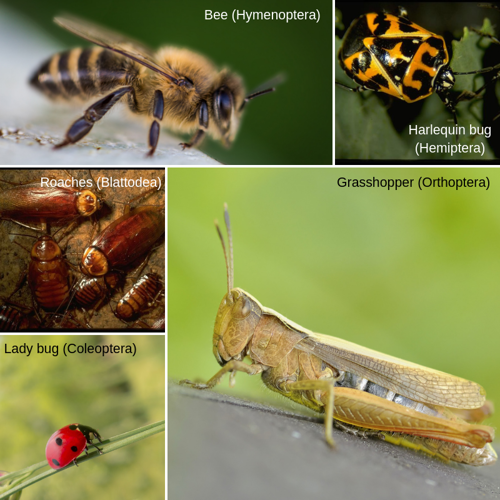
Above: The image shows a variety of arthropod species that quail will eat. Top left shows a bee, top right shows a harlequin bug, bottom right shows a grasshopper, middle left shows a roach and bottom left shows a lady bug.
If you ever have trouble identifying an insect out in the field, check out the Texas A&M AgriLife Extension Service's free Field Guide to Common Texas Insects for quick ID tips, pictures and descriptions.
Forbs
Early successional forb seeds are especially important sources of food for quail, as they provide calories, moisture, and nutrients. Clearly, forbs are important, but this information is not very handy if you do not know the plant. So, what is a forb, anyways? Most folks think of forbs as "weeds"... but in a wildlife context not all "weeds" are bad, most are beneficial.
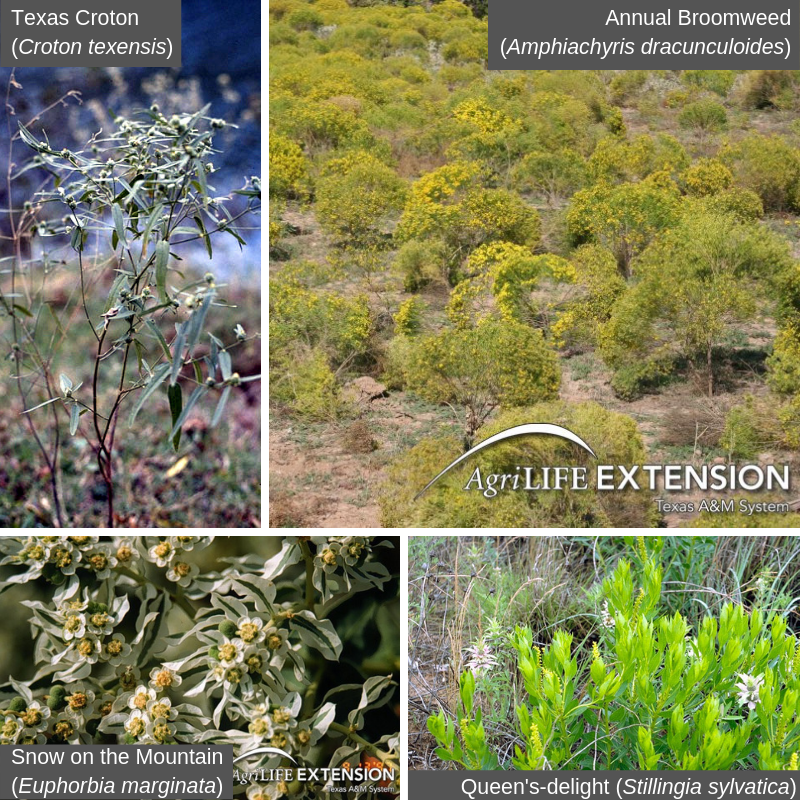
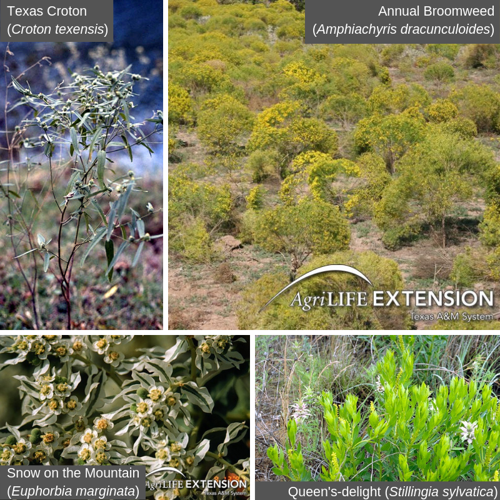
Above: The image shows a variety of forb species that quail will eat. Top left shows a Texas croton, top right shows an annual broomweed, bottom left shows a snow on the mountain and bottom left shows a queen’s delight.
Many would consider Western Ragweed nothing more than a nuisance plant and a source of hay fever, but for quail, this forb is an excellent source of seeds in their diet.
We all enjoy a little variety in our diets, and quail are no different. They will readily eat seeds from many different forbs, including Annual Broomweed, Buffalo-bur, Annual sunflower, Cowpen Daisy, Croton, and Snow-on-the-Mountain.
Grasses
Grass seeds are another important element of a quail’s diet, with Johnsongrass and Plains bristlegrass being a couple of their favorites. Desirable seeds should be “hard, slick” as opposed to “fluffy, chaffy” seeds.
Woody Plants
Woody plants produce another staple of a quail’s diet: fruit. Ripe fruits that are within a quail’s reach can be easily picked apart for seeds or consumed whole, providing calories and moisture.
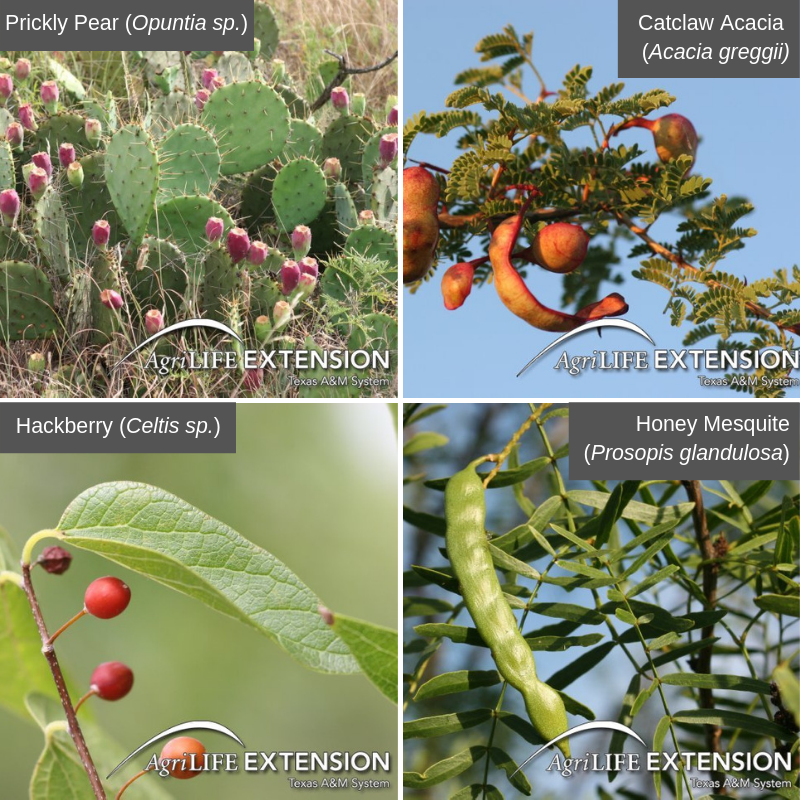
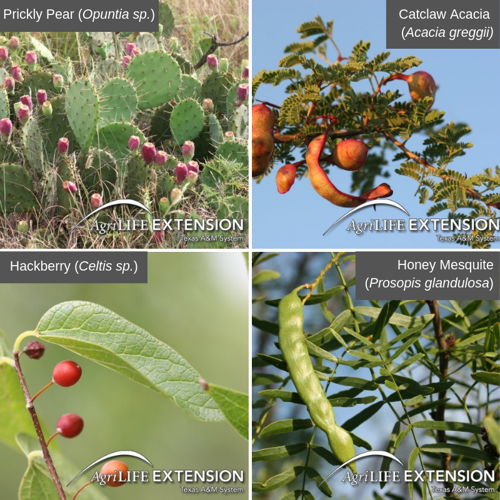
Above: The image above shows a variety of woody plant species that quail will eat. Top left shows a prickly pear cactus, top right shows catclaw acacia, bottom left shows a hackberry and bottom right shows a honey mesquite.
Examples of important woody species for a quail's diet include Catclaw Acacia, Catclaw mimosa, Hackberry, Mesquite, Oaks, Pricklyash, Prickly Pear, Skunkbush Sumac and Wolfberry.
WHEN YOU’RE READY, TAKE THE QUIZ!
Want more Quail? Check out these resources:



